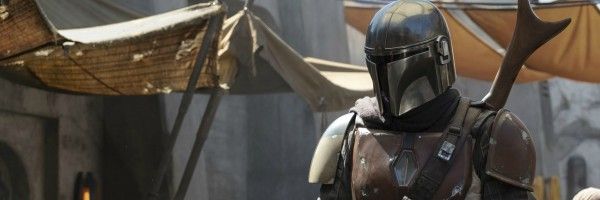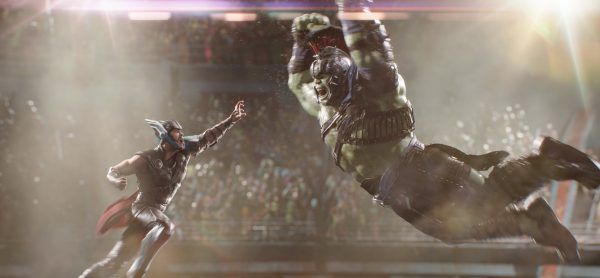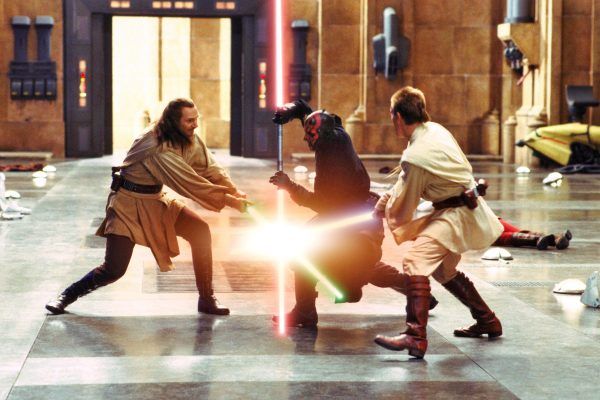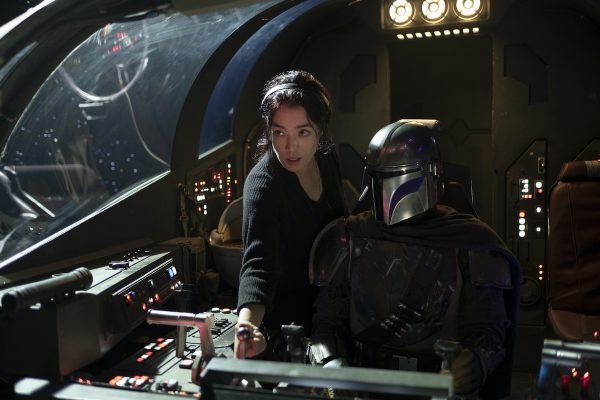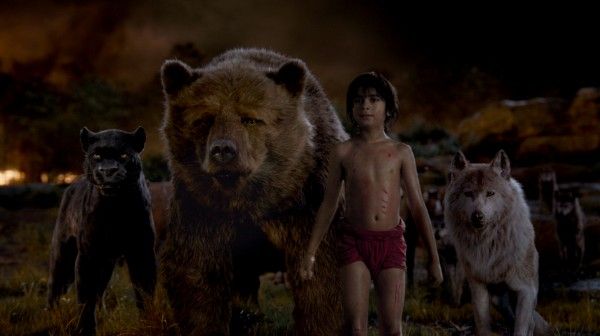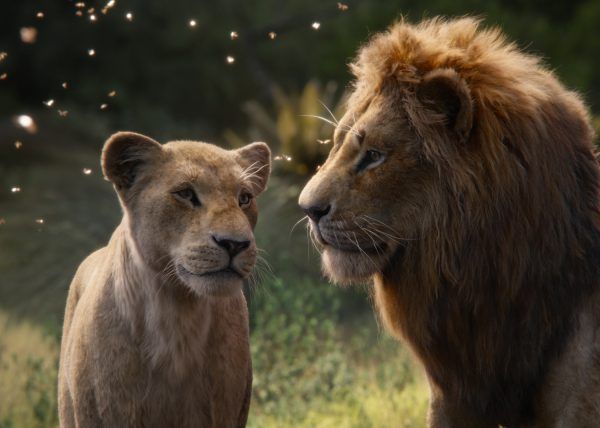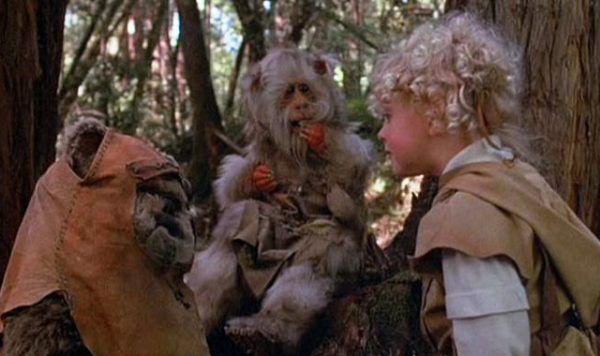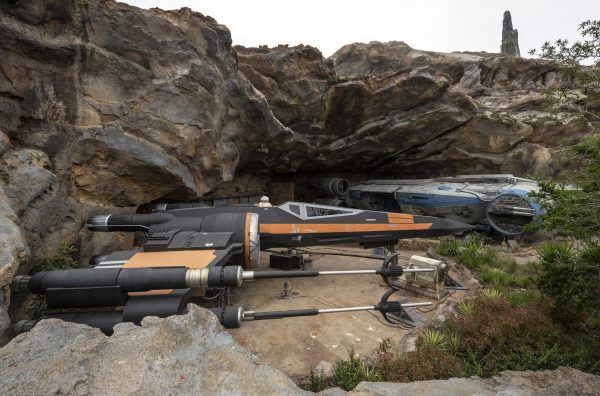The Disney+ docuseries Disney Gallery: The Mandalorian concluded its eight-episode run last week. While it initially might have seemed like a self-serving promo for its flagship series (and, frankly, a bid to win Emmys), the show actually proved to be a insightful and incredibly fun to watch behind-the-scenes look at the first-ever live-action Star Wars television series. Combining on-set footage with loose, jovial roundtable discussion with key cast and crew members, Disney Gallery also, mercifully, scratched that Mandalorian-shaped itch for a few more weeks before the second season debuts this fall. (Series creator Jon Favreau, amongst other things, is a perfectly garrulous interviewer, able to coax the very best stories out of people.)
The sensation of watching Disney Gallery: The Mandalorian is akin to enrolling in the greatest, most in-depth Star Wars history class, where everything on screen connects to something else in the greater universe. Every episode teaches you a lot: about the making of the show, the people behind it, and the deeper mythology that makes Star Wars so special. Here are the things we learned from Disney Gallery: The Mandalorian, now streaming in full on Disney+:
Dave Filoni Almost Blew It
Executive producer Dave Filoni has a lengthy background with Star Wars animation having worked on The Clone Wars alongside George Lucas and on shows like Star Wars Rebels. In the very first episode of Disney Gallery: The Mandalorian, he tells the story of when Lucasfilm called him while he was working on the show Avatar: The Last Airbender for Nickelodeon. Filoni was convinced that the call was a joke. And even after several interviews, first with executives at the company and then with Lucas himself, he was convinced that he had struck out. (But he knew it would be a great thing to tell “the other nerds” as he waited in line for Revenge of the Sith.) Finally, he was alerted by a producer that he had gotten the job. He’s been one of the key creative forces in the entire Star Wars universe ever since.
Taika Waititi Was Used to Working with Scraps
While Favreau admits that Taika Waititi, the Oscar-winning director who helmed the first season’s final episode (and voiced reformed assassin droid IG-11), was the most experienced when it came to visual effects, having come from Thor Ragnarok, that wasn’t always the case. Waititi remembers working on the hilarious What We Do in the Shadows and asking the Weta Workshop if they had anything leftover from Lord of the Rings that they could use. They ended up using old prosthetics that Peter Jackson had deemed unworthy, but it set him up for success on The Mandalorian, which frequently borrowed props, costumes and creatures from other Star Wars productions, including some of the recent features and even the theme park land (see below). “I could trick the computer people into thinking I knew what I was talking about,” Waititi laughs.
John Knoll, Industrial Light & Magic Legend, Knew When More Star Wars Was On the Way
John Knoll, one of the titans of the visual effects industry (he also invented Photoshop), was working at George Lucas’ effects house Industrial Light & Magic, long before there were plans for the prequels (or anything else). He tells a story in the second episode of Disney Gallery: The Mandalorian about how there were yearly meetings with the staff of ILM. George would address them directly, and inevitably every year someone would ask if there were more Star Wars stories coming. Every year Lucas would say no. But one year [WHAT YEAR WAS THIS, APPROXIMATELY?] he said “maybe.” That’s when Knoll knew that there would be more installments. (Knoll would also come up with the story for Rogue One and serve as an executive producer.) Producer Kathy Kennedy thinks that it was always on Lucas’ mind, and that every time there was a storytelling or technological breakthrough, it would stir the desire in him to create again. Until one day... he returned to the fold.
Buckle Up for an Appreciation of the Prequels
If you’re like me, you don’t care much for the Star Wars prequels. They’re stiff, belabored, and awkward. But Dave Filoni, at the end of Episode 2 of Disney Gallery: The Mandalorian, gives this long speech about what the lightsaber battle at the end of The Phantom Menace means and why it’s so important that will honestly make you reassess how you feel about that awful movie (if, like me, you dismiss it completely). It’s sort of like Patton Oswalt’s Star Wars filibuster on Parks and Recreation but it’s actually real and genuinely stirring. Filoni waxing poetic about how Anakin badly needed a father figure in Obi-Wan that he never receives, is one of the more powerful explorations of the prequels that you’ll likely ever hear. “Star Wars is ultimately a series about family,” Filoni explained. “But [the lightsaber duel] is everything that the entire three films hang on.” Whoa.
Pedro Pascal Suffered a Fall
Pedro Pascal, prior to playing the title role in The Mandalorian, has been in a number of high-octane, action-packed movies, including The Great Wall and Kingsman: The Golden Circle. But while walking out of his trailer, reading his script, he walked into a piece of plywood and had to be sent to the hospital. Since he was shooting the climactic scene in the final episode, when he finally takes off his chrome helmet, he looked like a bloody mess.
“They were all like ‘Let him in!’” Favreau remembers. “They thought I was at death’s door!” Pascal said. Pascal wound up with seven stitches. “You moved mountains and I couldn’t get from the make-up trailer to rehearsals,” Pascal said. He wound up going right back to work.
Carl Weathers Was Supposed to Be Dead – and an Alien
At one point, Carl Weathers’ character was supposed to be introduced in the first episode and dead in the third episode. And what’s more, he was going to be a different alien race. “He was going to be in full prosthetics and then we switched it up,” Favreau explained. (Gina Carano, who plays former Rebellion shock trooper Cara Dune, had no idea.) “First thing: he can’t be an alien. How are you going to cover that up?” Favreau said. For his part, Weathers assumed that Favreau would ditch the make-up idea. And, of course, Weathers was so perfect for the role, both charismatic and menacing, that they kept him around for the entire first season.
The Technology Was Really Next-Level
The episode of Disney Gallery: The Mandalorian that is undoubtedly the most mind-blowing was the one devoted to the technological advancements that made the show possible (the episode is called “Technology,” in case you were curious). Much of the episode is centered around The Volume, a stage surrounded by high-def video screens that allow for the directors to shoot and have the background (whether it’s a junky space station or some hostile alien landscape) created seamlessly. Favreau said: “The Mandalorian is the first production ever to use real-time rending and video wall in-camera set extensions and effects.” Got that?
They would also use it to extend elements like the Mandalorian’s ship the Razorcrest or the giant Sandcrawler that housed the Jawas. Effects could be triggered on the screens and reflected in the costumes and vehicles on stage, without the need for costly post-production effects. It seems like a small thing, but it’s one of those breakthroughs that only would have been possible with a story like this and the storytellers behind it.
There Was Actual Stop Motion!
This legitimately blew my mind. There’s a moment in the show where the Mandalorian arrives on the planet and looks through his scope and sees these Blurrgs – and those creatures are actually stop-motion! They were produced by Stoopid Buddy Stoodios, the stop-motion house responsible for a number of memorable Star Wars spoofs on Robot Chicken. Dave Filoni was actually apprehensive about utilizing stop-motion for the moment. “I was always game for all of it but I was like, ‘I don’t know how that’s going to work,’” Filoni said. “But I was amazed at how well it worked.”
The Entire Process Was Inspired by Animation
From the extensive storyboarding process to a heavy emphasis on pre-visualization to post-production, where shots are rendered and finalized, the entire process of making The Mandalorian was more akin to the production of animated film than a live-action television show. This was key for a number of reasons, the most pressing being that, with a streamlined production workflow, things could get accomplished faster and on a tighter budget. But for Filoni, whose background is animation, the process was second nature. “It is fascinating to hear live-action people talk about this process, because then I go back to where the other animators are and we all get together and say, ‘They’re really talking about the process we use,’” Filoni said.
Favreau stated that this approach was the culmination of everything that he had learned on The Jungle Book and The Lion King, movies that are mostly computer-generated, but utilizing camera capture and VR. (So, so much technology!) But the new pipeline allowed for the directors of the episodes to offer input much earlier and to have that implemented all the way through production (Chow said that she was on the show for two months before she shot anything). Like in animation, the team wanted to have it all worked out before anything was actually on set. Nothing is wasted. Favreau said he wanted to, “Borrow from the culture of animation.” Mission accomplished.
Ryan Coogler and Donald Glover Recommended Composer Ludwig Göransson
One of the big insights from the episode devoted to The Mandalorian’s distinctive musical score, was that Ryan Coogler recommended composer Ludwig Göransson to Favreau. Coogler has used Göransson on all of his films, including Creed and Black Panther, and suggested the musician to his fellow superhero alum Favreau, who of course kicked off the Marvel Cinematic Universe with Iron Man and continued to play a role (literally) as Tony Stark’s bodyguard and confidant Happy Hogan. Coogler and Göransson were roommates at USC. “We worked together on student films and have worked together since then,” Göransson said.
Favreau was also prompted by Donald Glover, who the director worked with on last year’s blockbuster reimagining of The Lion King. Göransson is one of Glover’s closest collaborators, producing the music for his Childish Gambino project and Glover’s award-winning television series Atlanta. Good thing Favreau listened to everybody. Can you imagine the show without that music?
There Was a Lot of Music
Instead of Göransson creating a short suite of music that was replayed, remixed, and cut up for the rest of the reason, the musician actually created new music for each episode (they were even released digitally as miniature albums, each week). “It was like scoring three feature films,” Göransson said. The trick, he said, was to capture the essence of that show, since each installment varied so wildly when it came to tone and style, but still have it keep within the overall vibe of The Mandalorian. Not an easy task. But boy did he pull it off.
There Is Major Willrow Hood Love
The series’ final episode, “Connections,” is a smorgasbord of Easter eggs, callbacks, and reference points (so, buckle up). Apparently there is a background character in The Empire Strikes Back, who is seen evacuating Cloud City and carrying what is very clearly a commercial ice cream maker. The character has been given a name by the fans (Willrow Hood) and every year at Star Wars Celebration there is a “running of the Willrow Hoods” (as Favreau is explaining this, Bryce Dallas Howard looks like her soul is escaping her body). So Favreau made it a point to include that very ice cream maker in The Mandalorian (canonically referred to as the Camtono) – it’s the mysterious package that Favreau likens to Samuel L. Jackson’s briefcase in Pulp Fiction. But, more than anything, it’s Favreau’s attempt to legitimize an ice cream maker an extra absent-mindedly grabbed while filming a scene in 1979. And there’s something admirable about that.
Everything is From Something
What you will learn in the “Connections” episode is that, well, everything has a connection. Here are a few of my personal favorite insights in the episode: Blurrgs, the two-legged beast that the Mandalorian learns to ride in the first episodes of the show, are actually from the 1985 TV movie Ewoks: Battle for Endor and were brought to life, in that production, via the magic of stop-motion animation (see above). They have also appeared in Filoni’s The Clone Wars and Rebels animated television series. One of the vehicles in the show is based on the Kenner Imperial Troop Transport, a toy released in 1979 that didn’t actually appear in Star Wars. But, again, Favreau wanted to make it canon. Additionally, there is an Incinerator Trooper whose design was borrowed from a videogame – Star Wars: The Force Unleashed. So there.
Mark Hamill Cameos on the Show
Did you know Star Wars legend Mark Hamill has a brief role in The Mandalorian? Neither did I. But he does, apparently. In the episode where The Mandalorian has business to attend to on Tattooine, Hamill is the voice of the bartender droid in the cantina. (Progress folks, remember how anti-droid they were in the first movie?) This is similar to the fact that Hamill supplied the voice for an alien character in Star Wars: The Rise of Skywalker (he’s the horned Resistance spy who is later beheaded) and Star Wars: The Last Jedi (as the little alien goblin on Canto Bight who drunkenly shoves gold coins into BB-8). It’s very cool to have a little of that Mark Hamill magic in the show, even if it has managed to fly so far under the radar (until now).
They Utilized a Piece of Star Wars: Galaxy’s Edge
For the scene at the end of The Mandalorian’s sixth episode (the prison break episode), there are three X-Wing pilots who fire upon a wayward space station that our hero has just escaped from. The pilots are, of course, played by Season 1 directors Dave Filoni, Rick Famuyiwa and Deborah Chow. We all knew that. But what was news to me was that the X-Wing that they were photographed in was actually a prop from Star Wars: Galaxy’s Edge, the 14-acre land at both Disneyland and Walt Disney World. The one they filmed was the one headed to Florida, which they had to open up and stuff with props, lights, and other details. But it looked perfect.
So, the next time you visit Galaxy’s Edge at Disney’s Hollywood Studios in Florida and look at the X-Wing, know that you’ve seen it before, on The Mandalorian.

